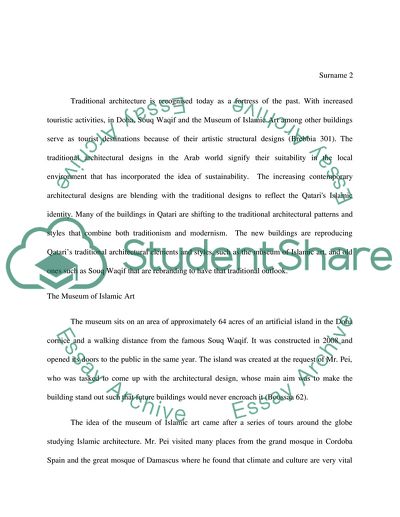Cite this document
(“Souq waqif and Museum of islamic arts Essay Example | Topics and Well Written Essays - 1500 words”, n.d.)
Retrieved from https://studentshare.org/architecture/1684586-souq-waqif-and-museum-of-islamic-arts
Retrieved from https://studentshare.org/architecture/1684586-souq-waqif-and-museum-of-islamic-arts
(Souq Waqif and Museum of Islamic Arts Essay Example | Topics and Well Written Essays - 1500 Words)
https://studentshare.org/architecture/1684586-souq-waqif-and-museum-of-islamic-arts.
https://studentshare.org/architecture/1684586-souq-waqif-and-museum-of-islamic-arts.
“Souq Waqif and Museum of Islamic Arts Essay Example | Topics and Well Written Essays - 1500 Words”, n.d. https://studentshare.org/architecture/1684586-souq-waqif-and-museum-of-islamic-arts.


